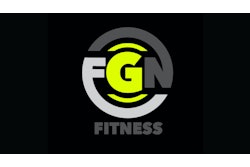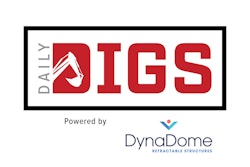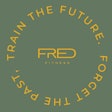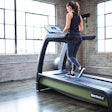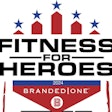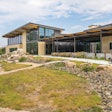
When we opened our first health club years ago, the concept of “design” was pretty straightforward: make the place look cool and pack in as much equipment — and as many people — as possible. Aesthetics mattered, and functionality was often an afterthought.
Fast forward to today, and the landscape has completely changed. Design is no longer just about appearances — it’s about creating purposeful, innovative spaces that enhance the user experience, support community wellness and set facilities apart from the competition. In an increasingly crowded marketplace, great design isn’t just a “nice to have” goal; it’s a true differentiator that can drive member loyalty, community engagement and long-term success.
A perfect example of this evolution is CORE Recreation Center in Elk Grove, Calif. We’ve had the privilege of serving as strategic advisors for this project, working closely with CORE’s incredible team on everything from operational playbooks and hiring strategies to the presale campaign — and, of course, facility design. I have to give full credit to CORE’s leadership and staff. They are a forward-thinking, mission-driven group committed to building a space that genuinely serves the health and wellness needs of the community. Their focus has never wavered from designing a facility that is innovative, functional and welcoming — a space that inspires people to move, connect and thrive.
Here are four standout design features that are helping CORE achieve that vision:
1. Intentional outdoor fitness areas
One of CORE’s most distinctive features is its intentional and thoughtful use of outdoor spaces, not just for aesthetics, but for creating an actual outdoor workout experience. The facility includes outdoor functional training turf, a fitness deck overlooking Morse Community Park, and an outdoor bouldering and slackline area. But what truly sets CORE apart is the planning and purpose behind these spaces. Everything was carefully considered — from selecting the right equipment and designing innovative storage solutions to analyzing sun patterns to ensure comfort and usability at different times of day.
Years ago, at our health clubs, we sometimes took workouts outside into the parking lot or the alley behind the building. It was a refreshing change of pace, and members appreciated the fresh air, but it certainly wasn’t a fully designed, elevated experience. CORE has taken that idea to the next level. It’s not simply “working out outside.” It’s delivering a curated outdoor fitness environment that feels functional, intentional and inspiring. The facility’s outdoor deck and turf areas expand programming flexibility, support a broader range of activities and create memorable ways for members to connect with both fitness and community.
As outdoor fitness grows in popularity, a question worth considering: How could intentional design help you create an outdoor experience that feels just as purposeful — and powerful — at your facility?
2. Three unique boutique studios
Rather than relying on a one-size-fits-all group exercise room, CORE took a boutique approach by designing three specialized studios: A HIIT/functional training studio, a strength training studio and a yoga/mind-body studio.
Each studio is equipped with tailored equipment, branding and atmosphere that match the energy of the classes offered. This enhances the member experience and positions CORE to compete with popular boutique fitness concepts, without requiring members to juggle multiple memberships. It’s an innovative and functional approach, tapping into boutique trends while staying true to CORE’s mission of serving a broad, community-based audience.
Boutique studios typically have an easier path to creating customized, immersive experiences through design, because they focus on just one or two formats. That level of specialization makes it easier to fine-tune everything — equipment, layout, lighting, sound — to deliver a signature experience. In a multiformat facility like CORE, it takes careful design of spaces to capture that same level of authenticity across different types of classes.
Our club only had one group exercise room, so we had to get creative with design to offer more format-specific experiences. We installed chandeliers to add atmosphere to boxing and kickboxing, used full overhead lighting for boot camps and sculpt classes, and dimmed the room with blinds and electric candles to set the mood for yoga. These minor but thoughtful adjustments greatly impacted the member experience and helped us create the right energy for each format.
With a little intentionality, you can create boutique-level experiences that leave a lasting impact, no matter the size or number of your spaces. Whether you have one group exercise studio or five, it’s worth asking: How might your design choices enhance the experience for every class format you offer?
3. Purposeful semiprivate workout zones
While wide-open fitness floors are still important, CORE recognized the value of creating “micro-spaces” within its expansive 59,000-square-foot footprint. The facility has thoughtfully designed semiprivate zones for individuals who prefer a more focused, secluded workout environment. These areas cater to a growing segment of members who value privacy and personalization, whether training one on one with a coach or simply wanting a little breathing room away from the busy main floor.
At our clubs, we didn’t have the space to do this. Looking back, it was one of our most significant design flaws. Members often commented that they wished there were quieter, more private areas to stretch, warm up or work through a routine without feeling like they were on display. It didn’t help that we made another early design mistake by placing the Olympic lifting platform next to the sales desk. Imagine signing up a new member while someone drops 250-pound deadlifts a few feet away. Needless to say, we moved that platform very quickly.
CORE’s semiprivate spaces are a simple but highly effective way to make a large facility feel more personal and approachable. They also allow CORE to better accommodate members with different preferences — those who thrive in the energy of a busy floor and those who feel more comfortable in a quieter, more individualized setting. It’s a great reminder that smart layout choices can significantly impact the member experience.
Whether you’re designing a new facility or refreshing an existing one, it’s worth considering: How could you incorporate smaller, purpose-built spaces that make your floor feel more welcoming and functional for everyone?
4. Community spaces that foster belonging
More than just a gym, CORE is a true community hub. From the moment one walks through the doors, thoughtful design choices are evident. The facility layout was crafted to feel open, welcoming and easy to navigate — from the bright, spacious lobby to the well-organized flow between fitness areas, group exercise studios and equipment zones. Wide-open spaces and abundant natural light create a lively, energetic atmosphere, while thoughtful spacing ensures that no area feels overcrowded. The result is a facility that’s vibrant yet comfortable and accessible to all users.
Every part of CORE was intentionally designed to foster community connection. The multipurpose courts support activities such as basketball, volleyball, pickleball and even dedicated kids programming — giving members of all ages more ways to stay active and engaged. Locker room layouts were carefully planned with accessibility and convenience in mind, including private changing areas and traditional lockers for full access, along with external lockers positioned throughout the facility for members who prefer a quicker option without ever entering the locker rooms.
Our club didn’t always have the luxury of wide-open spaces. Certain areas became cramped during peak hours, so we got creative and invested in high-quality outdoor furniture. This created an inviting social area in front of the club that quickly became a gathering spot for members to relax, connect and build friendships before or after workouts. It didn’t hurt that we were in Southern California, where the weather cooperated most of the year.
Even small touches like this made a noticeable impact on member experience and retention. CORE takes that philosophy even further. By prioritizing thoughtful, functional design that supports individual fitness journeys and broader community engagement, the facility has positioned itself as a fitness destination and a cornerstone of community life. Ask: Does your facility’s design create a welcoming atmosphere that patrons want to revisit often?
In today’s competitive fitness landscape, facility design has to accomplish more than just making a space look good. Design must be strategic, intentional and member-focused. CORE is a shining example of how innovative design, a strong operational strategy, and a passionate, forward-thinking team can create a space that meets the community’s needs and exceeds expectations.
As owners and operators, we must recognize that design is a powerful differentiator. Functional, flexible and inspiring spaces are no longer a luxury but a necessity. And the most successful facilities don’t start with the floor plan. They begin with the member experience and work backward. Every design choice should ask: How will this make your members feel? How will this make their journey better?
CORE is setting a new standard, and it’s a powerful reminder that when you combine vision, strategy and innovative, member-centric design, you don’t just build a fitness center — you build a community.


















